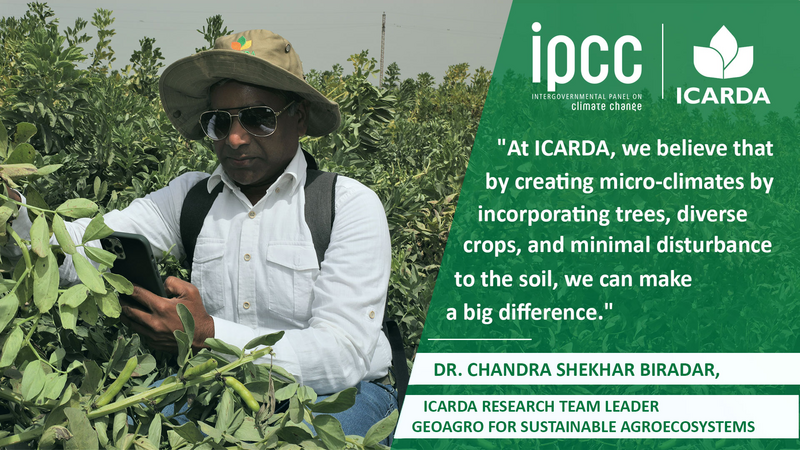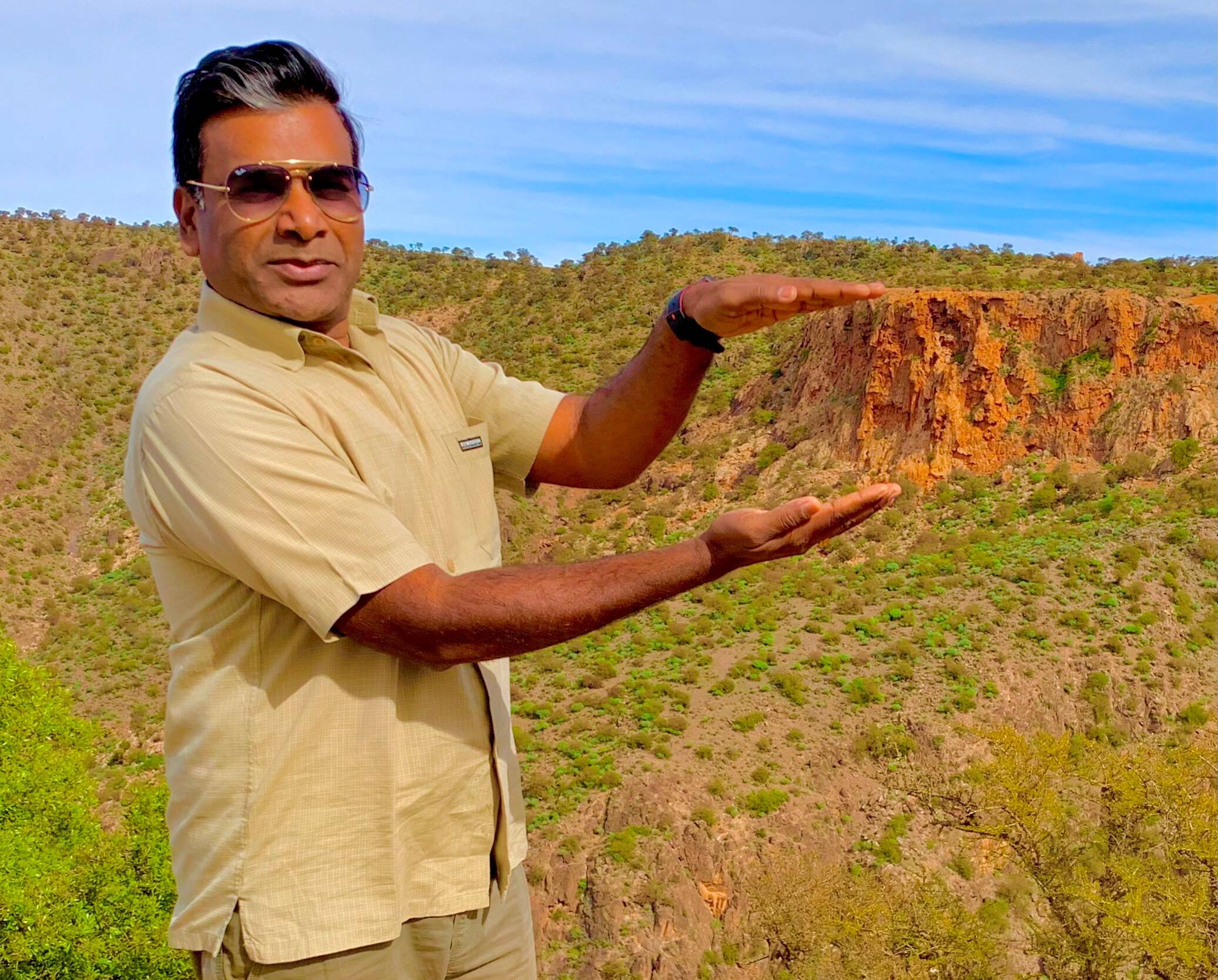GeoAgro scientist Dr. Chandra Biradar discusses drylands and the IPCC report

In a mini-Q&A series, ICARDA scientists express their views on what the future of climate change might look like across the drylands, and explain how ICARDA is helping dryland family farmers adapt.
Today’s Q&A features Dr. Chandra Shekhar Biradar, ICARDA's Research Team Leader -GeoAgro for Sustainable Agroecosystems, Principal Agroecosystem Scientist and Head of Geoinformatics and Research Data Management.
---------
Dr. Chandra Biradar: This new assessment clearly lays out the disastrous path we could be heading towards with climate inaction, or with the continuation of business as usual. But it isn’t all grim. We know that we can still improve farming systems through ecosystem-based approaches, and a lot can still be done despite the ongoing warming.
But we should take greenhouse gas emissions from food production and consumption patterns seriously. Most of the consumers and producers I have spoken to over decades have no idea that they contribute to climate change, especially urban and elite consumers, who waste 60% of all the food produced.
This report is also a call for action to change our attitudes, from farm to fork.
CB: What is very clear is that dry areas are getting hotter without a sharp increase in green cover. A large area of drylands are becoming barren because of loss of permanent vegetation, which increases dry winds and land surface temperatures, and drive rainy clouds further away.
But what we have seen as well is that people who observe nature-based farming practices have greener landscapes. So, within very dry areas, you can find pockets of green where farmers practice sustainable agriculture that includes trees, diverse crops and livestock, which help build the soil’s organic carbon.
There is still a window of opportunity and many options to improve farming practices to adapt to climate change. If there is a green cover and crop residues in the soil, the temperature in the area will drop by 2 degrees Celsius.
At ICARDA, we believe that by creating micro-climates by incorporating trees, diverse crops, and minimal disturbance to the soil, we can make a big difference. The farmers who practice cropping systems’ intensification through ecological approaches fare much better than the ones who don't.

CB: We need to look at the farm specific advisories more, especially since most of the agricultural practices in this part of the world are blanket applications that overlook individual farms’ variabilities.
In the Nile Delta for example, all farmers are given identical recommendations for water use, fertilizer application and crop varieties. But if you go at the micro level and observe individual farms, you can clearly see that there is variability in yields on just one farm, or among nearby farms. Then you can deduce why that is, based on the water and agronomic management practices of this specific farmer, and recommend more efficient and sustainable methods.
We provide site specific farm advisory to bridge the yield gaps at the farm level using site specific package of practices, which will in turn fill the yield and nutrition gap at the system level. Through ICARDA’s GeoAgro Pro, we are targeting three aspects: how to optimize water use, resource use efficiency (seeds, fertilizers, and labor), and introducing better crop rotations.
CB: The real game changer is that farmers are now getting better access to digital information and becoming aware of faulty management practices. Similarly, consumers’ awareness of the importance of nutrition and diet diversity is increasing.
Often, especially when farmers have good access to water, they think that water supplies are plentiful, because they don’t look at the long-term picture.
When they see information derived from satellite data and farm-to-farm variability, they can immediately spot the differences. Digital technology helps explain why these discrepancies exist, and why some lands are more productive than others, and it helps pinpoint key drivers of such gaps.
I call this precision agriculture made simple, accessible, affordable, and scalable. In the dry areas, half the population has access to smartphone technologies, which is also very helpful in bringing awareness among the population about healthy food, nutrition and lifestyle. This is a great way to provide vital information to women and attract the young generation to practice ecological farming.
Today, 80% of the research data comes from space of from mobile access, which helps us close the gap between the research lab and the field.
